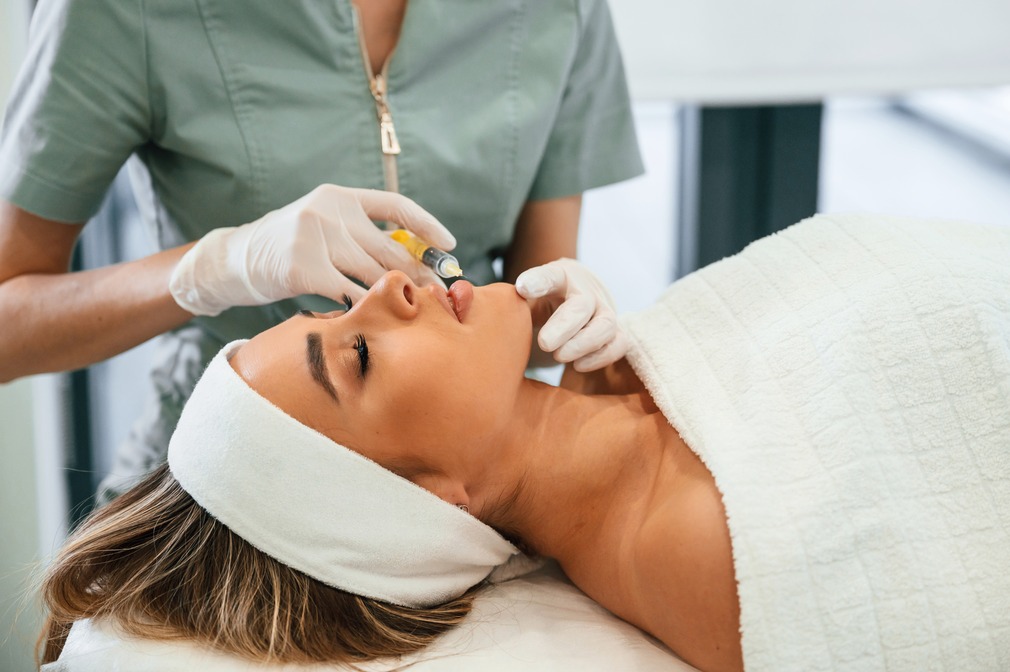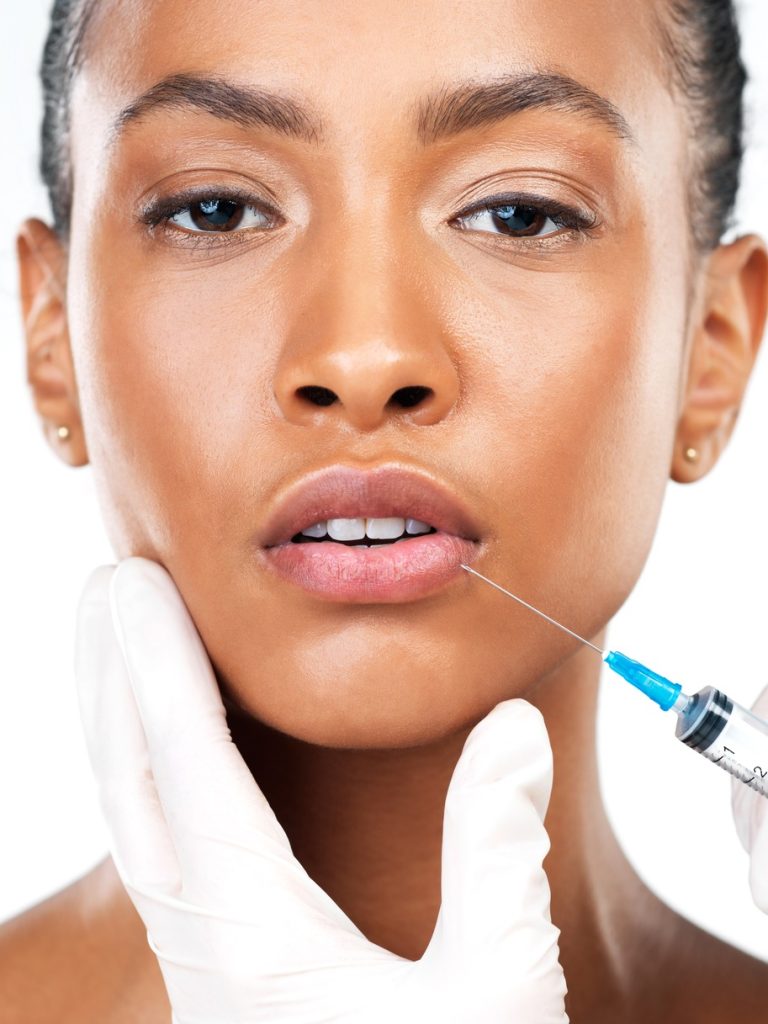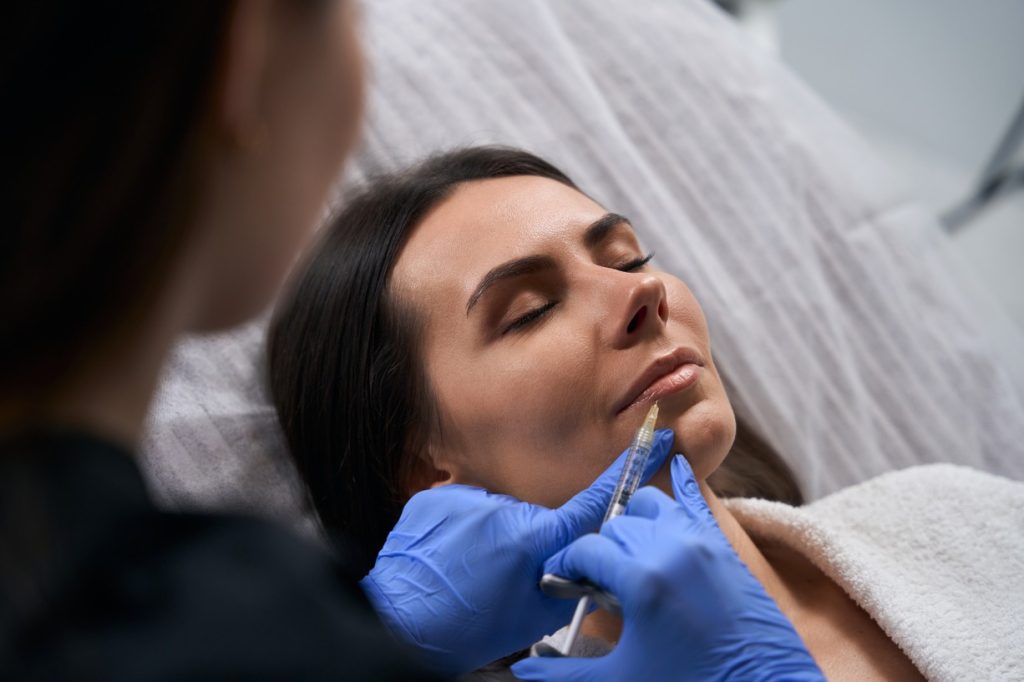If you’re considering dermal fillers, you might be wondering where these popular treatments are typically injected. These minimally invasive procedures can enhance your facial features and restore volume, giving you a more youthful appearance. Understanding the common injection sites can help you make informed decisions about your aesthetic goals.
Dermal fillers are primarily injected in areas like the lips, cheeks, and under the eyes. Each location serves a unique purpose, from adding plumpness to your lips to smoothing out hollows under your eyes. Knowing where these fillers are applied can help you visualize the potential results and discuss your expectations with your practitioner.
Understanding Where Dermal Fillers Are Injected
Injectable dermal fillers are gel-like substances injected beneath the skin to restore facial volume, smooth out lines, and soften creases. They are commonly used to enhance various areas of the face. Knowing the specific injection sites and their purposes can help you determine how fillers can meet your aesthetic goals.
- Cheeks: Fillers injected into the cheeks add volume and enhance facial contours. This results in a more youthful appearance and balances facial proportions.
- Lips: Injecting fillers into the lips plumps and enhances their shape. This creates a fuller, more aesthetically pleasing look.
- Under the Eyes: Fillers reduce the appearance of dark circles, hollows, or puffiness under the eyes. This application rejuvenates the overall look.
- Deep Dermal, Subdermal, and Supraperiosteal Levels: Fillers can be injected at varying depths to target specific concerns. For example, deeper injections address volume loss and improve skin elasticity, while superficial injections focus on enhancing surface features.
Understanding these injection sites aids in effective communication with your practitioner about your desired outcomes.
Common Areas for Dermal Filler Injections
Facial fillers are commonly injected into specific areas to enhance appearance and address cosmetic concerns. Understanding these areas can help you better communicate your aesthetic goals with your practitioner.
Lips
Injectable fillers enhance the following lip areas:
- Vermilion Border: Fills the edges, creating definition.
- Cupid’s Bow: Adds volume to the curve in the center of the upper lip.
- Oral Commissures: Reduces lines at the corners of the mouth, improving overall lip symmetry.
Cheeks
Cheek injections, including hyaluronic acid filler, restore volume and enhance contour in these regions:
- Above the Cheekbones: Boosts prominence, giving a lifted appearance.
- Lateral Cheek: Enhances fullness towards the sides, adding dimension.
- Mid-Cheek Region: Fills hollows, contributing to a youthful profile.
- Cheekbones (Zygomatic Bones): Elevates the cheeks, improving facial structure.
Nasolabial Folds
Dermal fillers target the nasolabial folds, also known as smile lines, which are creases extending from the sides of the nose to the corners of the mouth. These injections smooth out the lines, helping achieve a more refreshed look.
Forehead
Dermal fillers are not typically injected into the forehead. Neurotoxins like Botox are preferred treatments for this area due to their ability to relax muscle movement and minimize creasing.
- Marionette Lines: Fills lines running from the corners of the mouth downward.
- Chin Apex: Adds projection to the chin, enhancing facial balance.
- Mental Crease: Smooths the crease that may develop with age.
- Pre-Jowl Area: Restores volume to reduce sagging.
- Mandible (Jawbone): Enhances the jawline, providing definition and structure.
Benefits of Dermal Fillers in Different Areas
Dermal fillers offer various benefits depending on the injection site. Below are key areas where dermal fillers are commonly used and their specific advantages.
- Wrinkles and Folds: Dermal fillers smooth out wrinkles and fine lines by adding volume in the mid-dermis. Poly-L-lactic acid, a biocompatible and biodegradable synthetic substance, is particularly effective for deeper facial wrinkles and can provide results that last more than two years. This results in a more youthful and refreshed appearance.
- Lip Augmentation: Fillers enhance the shape and size of your lips, providing definition and fullness. This creates a more balanced and attractive lip profile.
- Depressed Scars: Fillers effectively treat different types of scars, including post-surgical and post-acne scars. By lifting and smoothing the skin’s surface, they promote a more even texture.
- Facial Contour Enhancement: Fillers enhance contours in areas like the cheeks and jawline. This contributes to a sculpted and youthful look, emphasizing your facial structure.
- Under-Eye Volume Restoration: Fillers restore lost volume in the under-eye area, reducing the appearance of dark circles and hollows. This leads to a brighter and more awake look.
- Marionette Lines: Fillers diminish the appearance of marionette lines, which run from the corners of your mouth to the chin. This softens lines and helps create a more cheerful expression.
- Chin and Jawline Definition: Fillers improve the definition of the chin and jawline. This provides a more proportionate facial silhouette and enhances strength in the lower face.
By understanding the benefits of dermal fillers in these specific areas, you can better align your aesthetic goals with your practitioner’s recommendations.
Considerations Before Getting Dermal Fillers
When considering dermal fillers, thorough preparation is essential for achieving optimal results. The dermal filler procedure includes stages such as the initial consultation, the actual injection procedure, and post-treatment care. Focus on selecting a qualified provider and understanding associated risks.
Selecting a Qualified Provider
Choose a healthcare professional who specializes in dermal filler injections. Look for someone with experience, proper training, and positive reviews. Verify qualifications through reputable sources, such as professional organizations or medical boards. An experienced provider will assess your goals, recommend suitable fillers, and ensure safe practices during the procedure.
Understanding Risks and Side Effects
Be aware of potential risks and side effects associated with dermal fillers. Common side effects include swelling, bruising, and tenderness at injection sites. Serious complications, such as allergic reactions or vascular occlusions, can occur but are rare. Discuss these risks with your provider to make an informed decision. Ensure you understand aftercare instructions to minimize complications and enhance recovery.
Maintenance and Aftercare
After receiving dermal fillers, proper maintenance and aftercare are essential for achieving and prolonging optimal results. There are various types of dermal fillers available, each with different maintenance needs. Understanding how to care for your skin can enhance your overall experience and satisfaction.
Longevity of Results
Most dermal fillers offer results that last between 6 to 18 months, depending on the type of filler used and the treatment area’s specific characteristics. Hyaluronic acid fillers typically last around 6 to 12 months, while thicker fillers for facial volumization may last up to 18 months or longer. Individual factors like metabolism, lifestyle, and skin type can also affect the duration of results. Staying hydrated and maintaining a consistent skincare routine can support the longevity of your fillers.
Follow-up Treatments
Follow-up treatments play a crucial role in maintaining your desired results. Regular adjustments or top-ups every 6 to 12 months can help sustain the youthful appearance achieved through dermal fillers. Scheduling follow-up appointments with your qualified provider allows for personalized assessments and ensures that the treatment aligns with your evolving aesthetic needs. It’s important to discuss the frequency and timing of these treatments to achieve the best possible outcome for your unique situation.
Conclusion
Understanding where dermal fillers are injected can help you make informed decisions about your aesthetic goals. By targeting specific areas like the cheeks, lips, and under the eyes, you can achieve a more youthful and refreshed appearance.
Choosing a qualified provider is vital for ensuring safety and optimal results. Regular maintenance and follow-up treatments will keep your results looking their best.
As you consider dermal fillers, remember that personalized care is key. Stay proactive about your aesthetic journey to ensure your treatments align with your evolving needs.
Frequently Asked Questions
What are common injection sites for dermal fillers?
Common injection sites include the cheeks, lips, under the eyes, and nasolabial folds. These areas are targeted to enhance facial volume and address cosmetic concerns effectively.
How long do dermal fillers typically last?
Dermal fillers usually last between 6 to 18 months. The longevity depends on the type of filler used and individual factors such as metabolism and lifestyle.
What should I consider before getting dermal fillers?
Before getting dermal fillers, it’s crucial to choose a qualified provider and understand the risks involved. Having a consultation to discuss your goals and any medical conditions is also important.
How can I maintain results after filler treatment?
To maintain results after filler treatment, follow aftercare instructions from your provider, avoid excessive sun exposure, and consider regular follow-up sessions every 6 to 12 months for adjustments.
Are follow-up appointments necessary for fillers?
Yes, follow-up appointments are essential to assess your results and make any necessary adjustments. They help ensure your treatment aligns with changing aesthetic needs and prolongs the youthful appearance.



